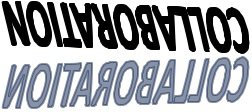A couple of weeks ago one of the featured articles in Education Week highlighted how the Common Core Standards are providing opportunities for school librarians to partner with teachers. This is something I have been continually preaching to my students for the past two years. I truly believe the Common Core Standards (CCS) provide an opportunity for school librarians to demonstrate that they are teachers and a valuable part of the educational process, and hopefully step up as instructional leaders in their schools. The inquiry-based learning that is central in the Common Core Standards is also at the foundation of the AASL Standards for the 21st Century Learner (AASL, 2007). The research process is integrated throughout the CSS and we as school librarians know a little something about this process! But are you making sure that the teachers in your school know this?
Yesterday as I opened my new issue of Knowledge Quest I was pleasantly surprised to see the editorial by the ever-current Buffy Hamilton (2012) discuss “how a participatory culture and learning [can] bolster implementation of the Common Core Standards” and the importance of reading and writing. The whole issue looks at innovative ways the school librarians can design learning experiences that not only engage students, but also address the CCS. What innovative ideas have you come up with to work with teachers to design innovative and meaningful learning experiences?
AASL has even created the Common Core Crosswalk, which presents a very useful quick reference tool on how the CCS and the AASL Standards mesh and the lessons in the AASL Lesson Plan Database also are aligned to the Common Core. Are you utilizing these resources to create standards based instruction?
The Education Week article goes a step further and says that the Common Core Standards are thrusting school librarians into an instructional leadership role. I disagree – I say they are providing us the opportunity and it is now up to each of us to step up into a leadership role. So the opportunity is there – what are you doing to take advantage of it? Are you stepping up?
References
American Association of School Librarians (AASL). (2007). Standards for the 21st-century learner. Chicago: American Library Association. Retrieved from http://www.ala.org/ala/ aasl/aaslproftools/learningstandards/standards.cfm
Hamilton, B. (2012). Participatory culture in the school library. Knowledge Quest, 41(1), 6-7.



